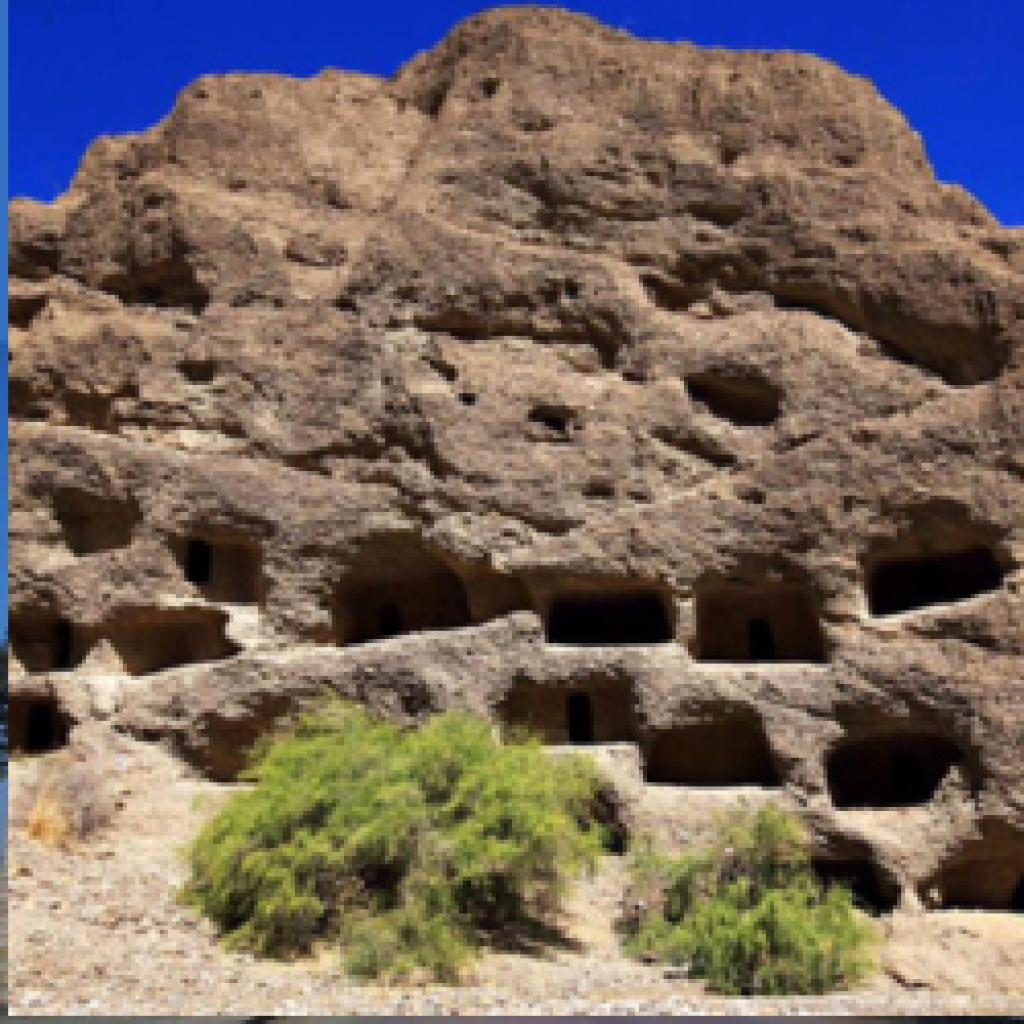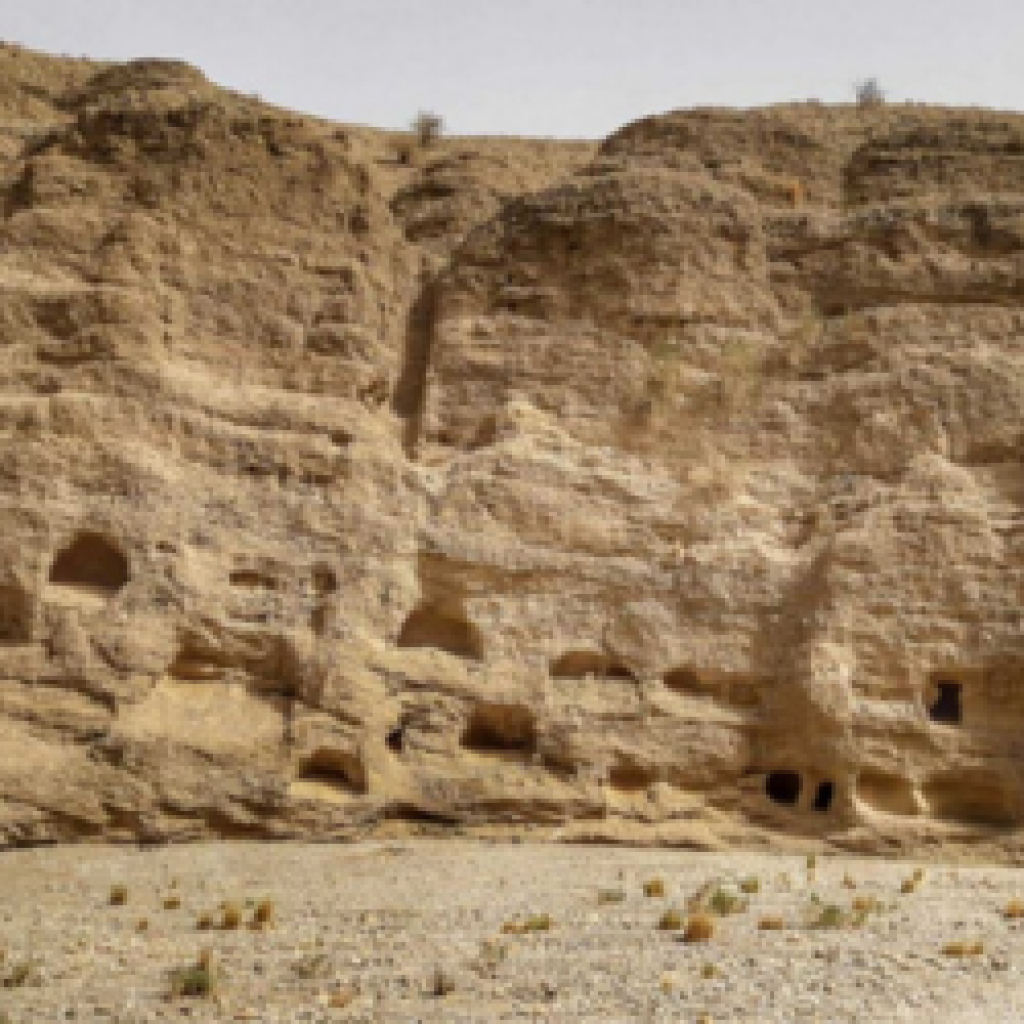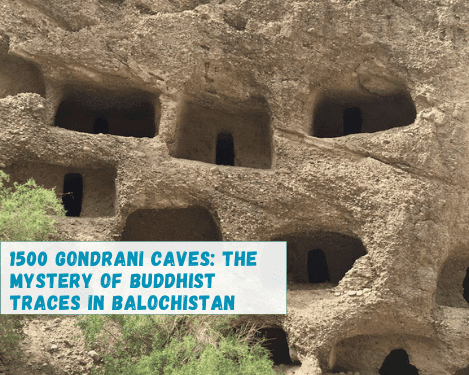Gypsy Tour Description:
Explore the enigmatic Gondrani Caves, a historic cave city near Bella in Baluchistan. Discover the undeciphered symbols, archaeological wonders, and intriguing myths that surround this hidden history. Uncover the rich history and witness the blend of folklore and reality in this unique tourist destination.



Introduction:
Nestled amidst the rugged landscapes of Baluchistan, Gondrani, also known as “The Cave City,” is a historic treasure trove waiting to be unveiled. This archaeological site, located near the city of Bella, holds secrets of an unknown civilization, boasting mysterious caves, undeciphered symbols, and myths that add a layer of intrigue to its enigmatic aura. This mystical cave city is located in Lasbela District of Balochistan.
Distances to different locations are as under:-
- Karachi to Gondrani Caves: 175 Km
- Hub to Gondrani Caves: 150 Km
- Uthal to Gondrani Caves: 60Km
- Bela to Gondrani Caves: 20 Km
- Qutta to Gondrani Caves: 513 Km
- Main RCD Highway to Gondrani Caves: 15 km away from the RCD Highway (N-25 )
Table of Contents
Location of Gondrani Caves:
Gondrani is situated approximately 175 kilometers north of Karachi, Pakistan, reachable through a 15 to 18-kilometer journey north of Bella or via the Karachi-Quetta Highway N-25. The caves, with small, darkened chambers and verandas, stand as silent witnesses to an ancient civilization that once thrived in this mystic region.
Common Myths about Gondrani Caves:
The lack of archaeological knowledge surrounding Gondrani has led to the creation of various myths and legends, each adding to the mystique of this cave city.
- Caves Belonged To Buddhists: Historians speculate that these caves, built in the 7th century A.D., might have been part of a vast Buddhist kingdom. Andre Wink, in his book “Early Medieval India and the expansion of Islam,” suggests a Buddhist connection, stating, “…not far from them are the Caves of Gondrani, about which there is no room for conjecture, for they are clearly Buddhist, as can be told from their construction.”
- Saif ul Maluk And Badiul Jamal: Local legend weaves a tale of King Solomon’s era, with demons haunting the king’s daughter, Badiul Jamal. Prince Saif-ul-Muluk eventually frees her and defeats the demons. This myth adds a touch of local folklore to the historical significance of Gondrani.
- Mai Gondrani – The Savior: The most famous myth involves Mai Gondrani, an old holy woman who sacrificed herself to save the locals from flesh-eating demons. Her burial site near the caves has become a revered local shrine, attracting pilgrims and adding a spiritual dimension to the cave city.
- Note: Any one myth may be true all may have some element of truth in it. Explore for yourself and believe the myth of your choice till evidenced-based research is not conducted and more credible information is not shared.
Tourism Perspective and Conservation Challenges:
Despite being one of Baluchistan’s most famous tourist destinations, Gondrani faces a conservation crisis. The total number of caves has dwindled from around 1500 during the British rule to a mere 500 due to the lack of government conservation efforts. The urgency to preserve this archaeological gem is evident, given its historical significance and potential to draw tourists.
Conclusion:
Gondrani, the cave city of Baluchistan, invites adventurers, historians, and curious minds to delve into its mysteries. From undeciphered symbols to ancient myths, every corner of this historic site holds a tale waiting to be uncovered. As we explore the enigmatic chambers and absorb the rich history, it becomes imperative to address the challenges of conservation, ensuring that Gondrani’s legacy endures for generations to come.
Embark on a journey to Gondrani – where history, folklore, and archaeology converge to create a unique tapestry of cultural richness in the heart of Baluchistan.


0 Comment